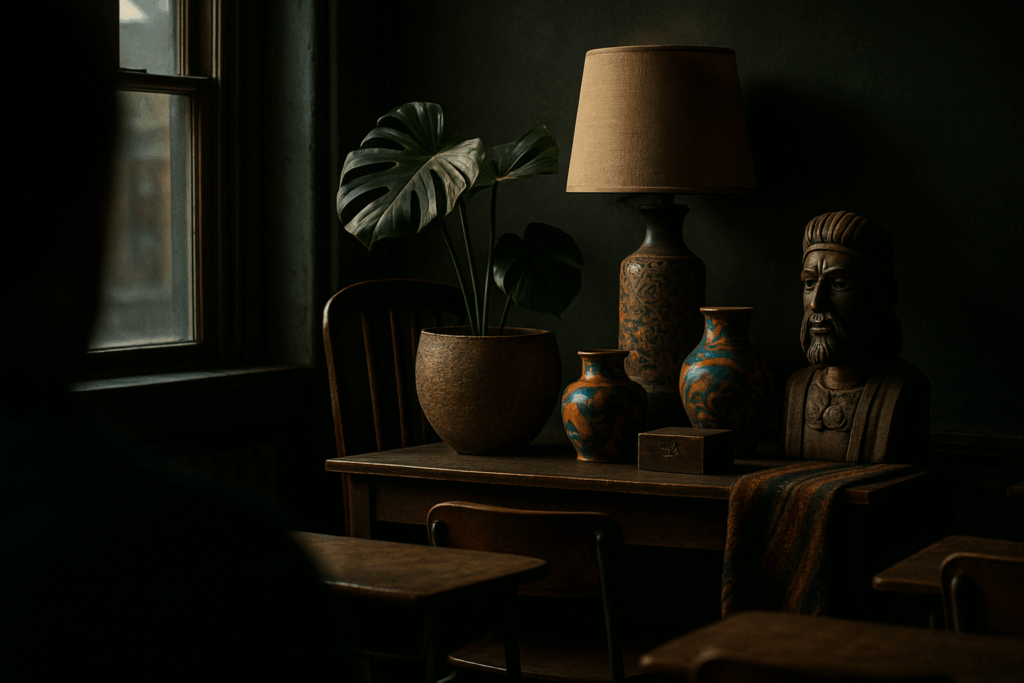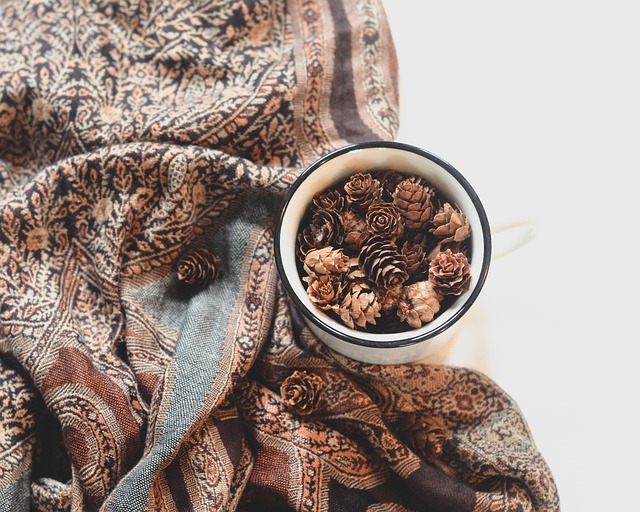Introduction: Why Blend Opposites?
For years, people picked sides: minimalist or maximalist. Clean lines or curated chaos. But 2024 design thinking isn’t about teams—it’s about tension. The back-and-forth between restraint and indulgence creates a kind of lived-in energy that neither extreme can pull off alone.
Minimalism brings clarity—space to breathe, room to move, an intentional lack of distraction. Maximalism brings character—stories stacked in layers, eccentric textures and objects that demand attention. When you mix the two on purpose, you get balance. Not in a perfect 50/50 way, but in a way that feels grounded and interesting.
The real trick isn’t choosing one or the other. It’s finding the friction point—the place where sleek meets loud, and simplicity frames boldness. That contrast is what gives a space personality. Minimalism calms the eye; maximalism keeps it looking. Together, they make rooms that feel human: ordered, but not sterile. Expressive, but not overwhelming.
Understand the Core of Each Style
Minimalism isn’t just about empty spaces and beige walls—it’s design stripped down to what actually matters. Think clarity, clean lines, air to breathe. It’s not cold; it’s focused. Everything has a place and a purpose. The result? A room that calms you down rather than adds to the noise.
Then there’s maximalism. Not chaos, but character. It’s layered bookshelves, big art, rich textures, and stories in every object. Maximalist rooms feel lived-in, full of personality and visual drama. It’s about expressing identity through space.
Now—what happens when you mix these two? You get interiors that are both grounded and vibrant. Calm backdrops allow standout pieces to shine. Restraint keeps the bold from tipping into clutter. It’s not half-and-half—it’s intentional blending. The minimal gives the maximal something to lean on. The maximal gives the minimal soul.
Strategy #1: Use Minimalist Foundations
Start with the basics. Clean architectural lines. Simple, durable furniture that earns its keep. Neutral backdrops—think soft whites, natural wood, light gray—that don’t shout for attention. This is where form and function meet the quiet confidence of restraint.
Now, leave some breathing room. Every object matters more when it’s not crammed against five others. Let negative space do some heavy lifting. A blank wall isn’t empty—it’s potential. It clears the mental palette, giving your eye somewhere to rest.
This minimalist foundation is the canvas. It’s not the star of the show—it’s the stage. And when it’s done right, it sets up your maximalist pieces to shine. That one oversized velvet chair. The wall-sized chaotic photo collage. A brass lamp that looks like sculpture. They land differently when they rise up from calm, intentional ground.
Minimalism isn’t about having less—it’s about making space for what you really want to highlight. That’s the only way maximalism really works.
Strategy #2: Maximize on Purpose
Once your space has a clean, minimalist foundation, it’s time to layer in volume and attitude—but with intention. Color, pattern, and artwork are your main tools. Think of them like punctuation in an otherwise calm sentence. A deep green wall, a vintage rug with a wild print, or a floor-to-ceiling gallery of framed sketches—these aren’t clutter if they’re chosen with care.
Lighting is another underused standout. A sculptural lamp or a bold chandelier can do more for mood and personality than adding ten little decor items. Same goes for textiles: a velvet couch or handwoven throw adds both texture and visual depth. It’s about investing in fewer, stronger design choices.
Personal objects tell your story. That doesn’t mean cramming every souvenir onto one shelf. It means curating—maybe it’s a bold ceramic bowl from a trip or a quirky portrait passed down from your grandmother. Together, these items build visual weight and emotional substance without crossing into visual chaos.
Maximalism here isn’t about more. It’s about meaning. Pick pieces that pull their weight, spark curiosity, or make someone ask, “Where did you get this?”
Strategy #3: Create Visual Hierarchy
Blending minimalism and maximalism successfully depends on how your eye moves around a room. Visual hierarchy helps guide attention purposefully, allowing bold elements to shine while supporting them with quieter design choices.
Design Focal Points with Contrast
One of the most effective ways to create visual interest is through contrast. Strong differences in color, scale, or shape can draw the eye exactly where you want it.
– Use a bold artwork or statement furniture piece against a muted wall
– Layer texture or color in one area to create a visual anchor
– Pair sleek modern lines with intricate or ornate details for tension and interest
Balance Bold Patterns with Subtle Neutrals
Maximalism thrives on expressive patterns—but too many can overwhelm. Minimalist elements, such as solid colors and clean finishes, offer breathing room for bold moments to shine.
– Combine patterned upholstery with solid cushions or rugs
– Use neutral walls to offset detailed flooring or wallpaper
– Alternate visual intensity: pair a statement area with simpler surrounding elements
Mix Symmetry and Asymmetry for Dynamics
Symmetry offers order, while asymmetry introduces movement. Together, they can energize a space without creating chaos.
– Balance a centered layout with one unexpected, off-center piece
– Place two symmetrical chairs across from an asymmetrically styled coffee table
– Use repetition (like matching light fixtures) to ground more eclectic compositions
When used intentionally, contrast, balance, and unexpected layouts make a room feel curated—not chaotic. Visual hierarchy is the secret to inviting both minimal and maximal principles to coexist beautifully.
Strategy #4: Connect Through Nature and Texture
When minimalism and maximalism feel miles apart, nature closes the gap. Organic materials—wood, stone, linen—bring grounded warmth that works across style camps. A reclaimed wood sideboard fits just as naturally in a minimalist layout as it does in a maximalist space layered with global textiles. The key is texture. Smooth plaster alongside raw timber. Crisp white linen offsetting a patterned Moroccan rug. It’s not about one or the other—it’s both, in balance.
Natural elements don’t just soften the room—they connect it. Think terracotta planters with dramatic leafy greens, or a grainy stone accent wall that gives neutral space visual interest. On the maximalist end, nature-inspired prints—leaf patterns, mineral tones, woven textures—inject depth without overwhelming.
Want more ideas for using nature in interiors? Check out How to Incorporate Nature Into Urban Interiors.
Strategy #5: Stick to a Cohesive Color Palette
Minimalist-maximalist spaces thrive on tension—and color is where that tension gets tamed. Start by limiting your base colors. Think one or two, tops. Neutrals like warm white, charcoal, or muted olive keep your canvas clean. These tones help ground the room and give your eye somewhere to rest amid the layers.
Now, when it comes to accent tones, you’ve got freedom—but not chaos. Pick 2–4 punchy hues. They should pop, but they need to repeat. That repetition—the mustard throw echoed in a wall print, the cobalt vase that matches a stripe in your rug—is what keeps the room from spiraling into visual noise. Done right, it feels collected, not cluttered.
Some palettes that hit the mark: slate grey with copper and forest green; pale beige with rust, indigo, and black accents. Or a black-and-white base with rich marigold and terracotta details. These combos find a rhythm between calm and bold. They’re proof you don’t need more color—just smarter use of it.
Real-Life Examples and Inspiration
Small doesn’t mean sterile. Some of the most compelling spaces in recent interior design have come out of compact apartments where minimalist layouts are interrupted—deliberately—by oversized art, bold murals, or wall sculptures. It’s about impact in tight quarters. These creative shots of personality break up the neutral backdrop and inject energy without needing more square footage.
In monochrome rooms, the trick is texture. A black-and-white palette can swing either cold or elegant. What shifts it toward the latter is contrast—think matte walls with high-gloss accents, patterned rugs over sleek floors, or woven textiles against industrial surfaces. Adding pattern in unexpected spots (like ceilings or backsplashes) keeps the mood grounded but visually arresting.
Then there are the spaces that manage to calm the mind and still catch the eye. These are rooms where restraint and drama sit at the same table. Maybe it’s a minimalist lounge area with a riot of books built into one wall. Or a tranquil bedroom broken up by bold color blocking. These examples don’t follow a formula—they follow intent. Each element has a reason to be there, and together, they tell a story that’s both personal and polished.
Final Thoughts: Design with Intention
Mixing minimalism and maximalism isn’t about striking a perfect 50/50 split. It’s about making bold, deliberate choices that reflect who you are and how you want to live. Some spaces lean cleaner, others chaotic—but when the intention is solid, both can work.
Editing is key, but don’t scrub away the stuff that gives your room soul. That old travel trinket, the neon light with questionable taste—if it says something real about you, it’s worth keeping. Purpose beats polish every time.
And yes, the best rooms usually break a few rules. But they do it with thought, not carelessness. Unexpected color combos, a towering gallery wall in a small space, a plush velvet couch in a concrete loft—these risks land when grounded in a clear vision. Trust your gut, then trust the process.
Perfect isn’t the goal. Honest is.




